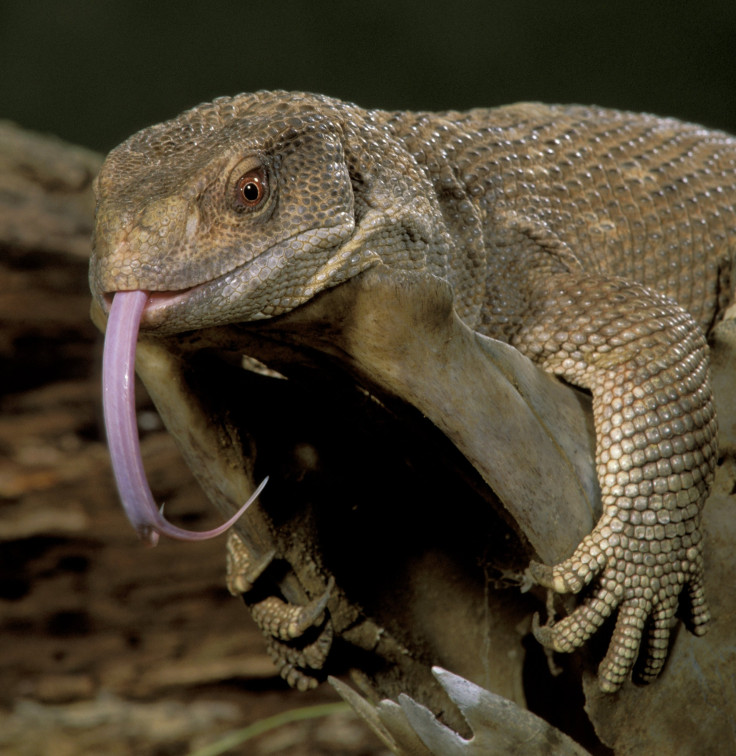Lizards Breathe Like Birds, One-Way Breathing Pattern May Be 270 Million Years Old

A new study reveals that monitor lizards have a unidirectional way of taking in oxygen, in which air flows through their lungs in a one-way loop. According to the findings, published in the journal Nature, the breathing pattern may be 270-million-years-old.
"That’s surprising that we don’t know something so incredibly basic about the biology of a group of animals," C.G. Farmer, the study’s senior author and an associate professor of biology at the University of Utah, told the Salt Lake Tribune.
Researchers found that monitors throughout Africa, China, India and other parts of Southeast Asia display this unidirectional breathing pattern. It's differs from the way humans and other mammals breathe, in which air enters the lungs through airways and then flows back out the same way, known as “tidal” breathing. When birds breathe, however, air enters the lungs in one direction, making a loop before exiting.
In the 1930s, birds were found to use this kind of breathing pattern. "It was first noted in birds that were living in train stations in Europe," Farmer told LiveScience. "They were burning coal to power trains and noticed that only one part of the bird's lung was getting black with soot."
“It appears to be much more common and ancient than anyone thought,” C.G. Farmer, the study’s senior author and an associate professor of biology at the University of Utah, said in a press release. “It has been thought to be important for enabling birds to support strenuous activity, such as flight. We now know it’s not unique to birds.”
As for monitors, researchers came to the conclusion after studying lungs from living and dead monitor lizards. Using CT scans, 3-D images of lizard lungs to visualize the anatomy of the lungs, and surgically implanting flow meters in the bronchi of five monitor lizards, the airflow direction was revealed. In 10 deceased lizards, researchers pumped water filled with sunflower pollen particles into the reptiles' lungs to visualize the unidirectional air flow.
Scientists believe the one-way breathing is an evolutionary trait to help birds absorb higher amounts of oxygen, allowing them to fly at higher altitudes without getting tired or losing consciousness. Before the latest study, Farmer and others believed the one-way flow started about 251 million years ago to help dinosaurs’ ancestors dominate the Earth when oxygen levels were low.
“But if it evolved in a common ancestor 20 million years earlier, this unidirectional flow would have evolved under very high oxygen levels,” she said. “And so were are left with a deeper mystery on the evolutionary origin of one-way airflow.”
But the latest discovery could mean that monitor lizards aren’t the only reptiles using this kind of breathing pattern.
"We need to look at other animals in different ecological niches, but I would not be surprised to find that this is very common in other cold-blooded vertebrates," Farmer said.
© Copyright IBTimes 2025. All rights reserved.




















